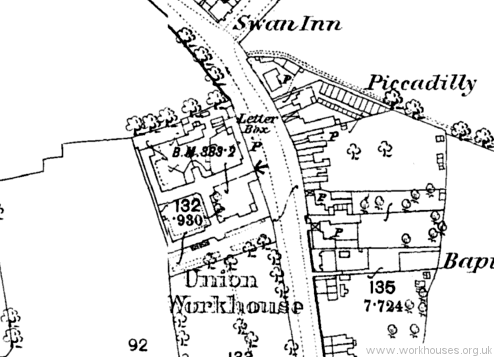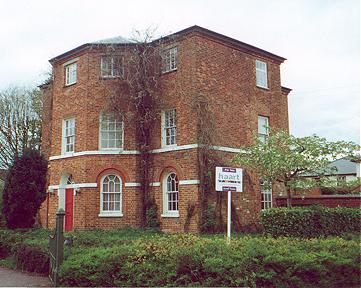Winslow, Buckinghamshire
Up to 1834
In 1725, the early workhouse directory, An Account of Several Workhouses..., notes the existence of a workhouse at Winslow. A parliamentary report of 1777 records that Winslow's workhouse had accommodation for up to 20 inmates. In 1795, sixteen paupers were being "farmed" by a contractor who received 3s. a week from the parish for each person being maintained in the workhouse, together with the paupers' earnings.
After 1834
Winslow Poor Law Union was formed on 9th June 1835. Its operation was overseen by an elected Board of Guardians, 18 in number, representing its 17 constituent parishes as listed below (figures in brackets indicate numbers of Guardians if more than one):
County of Buckingham: Drayton Parslow, Dunton, East Claydon, Grandborough [Granborough], Great Horwood, Hogston or Hoggeston, Hogshaw-cum-Fulbrook, Little Horwood, Mursley with Saldin, Nash, North Marston, Shenley Brook End, Stewkley, Swanbourne, Tattenhoe, Whaddon, Winslow-cum-Shipton (2).
The population falling within the Union at the 1831 census had been 7,847 with parishes ranging in size from Tattenhoe (population 13) to Winslow itself (1,290). The average annual poor-rate expenditure for the period 1832-35 had been £11,291 or £1.8s.9d. per head of the population.
At their meeting on 11th June, 1835, the new Winslow Board of Guardians invited architect Sampson Kempthorne to advise them regarding the alteration of the existing Winslow parish workhouse for use by the Union. Kempthorne advised them that a building for at least 200 inmates was required and the Board resolved to erect a new one. A Building Committee was appointed to pursue the matter. They requested plans and estimates from Kempthorne and from George Gilbert Scott for workhouse to accommodate 250 paupers. Scott was the architect of many other workhouse buildings including one for the adjacent Buckingham Union. On 29th June, Scott's plans were adopted.
The new workhouse was built on a site at the west side of the High Street to the north of Winslow. The Poor Law Commissioners authorised an expenditure of £5,250 on its construction. The workhouse was based on the model "square" plan published by the Commissioners in 1835 which, ironically, had been designed by Sampson Kempthorne. It featured a four-storey octagonal hub, from which radiated four three-storey ranges. A three-storey entrance block stood at the south, with single-storey blocks forming the square perimeter of the building and enclosing the various inmates' yards.
The site location and layout are shown on the 1880 map below.

Winslow workhouse site, 1880.
Unlike Kempthorne's typical designs, Scott gave the entrance block a distinctive appearance with a canted bay at its centre.

Winslow entrance block from the south-east, 2000.
© Peter Higginbotham.
After 1930, the former workhouse was known as Winslow Institution, then after the formation of the National Health Service in 1948 it became Winslow Hospital. The hospital closed in 1978 and the workhouse buildings have since been demolished with the exception of the former entrance block which has now been converted to a house.
Staff
Inmates
Records
Note: many repositories impose a closure period of up to 100 years for records identifying individuals. Before travelling a long distance, always check that the records you want to consult will be available.
- Centre for Buckinghamshire Studies, County Hall, Walton Street, Aylesbury, Bucks HP20 1UU. Holdings include: Guardians' minute books (1835-1930); Admissions and discharges (1843-1977 with gaps); Births (1914-48); Deaths (1905-59); Creed registers (1869-1914); etc.
Bibliography
- None.
Links
- Winslow Workhouse Admission Records 1835-43 from Buckinghamshire Family History Society.
Unless otherwise indicated, this page () is copyright Peter Higginbotham. Contents may not be reproduced without permission.


